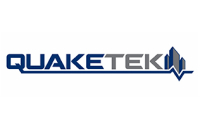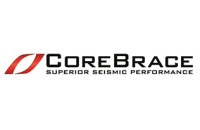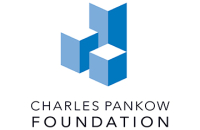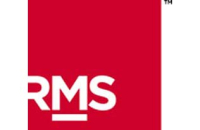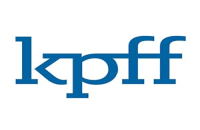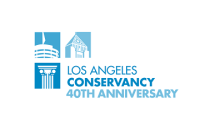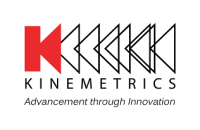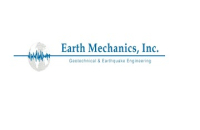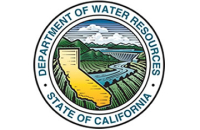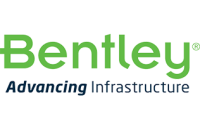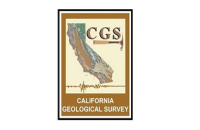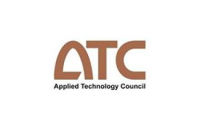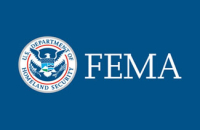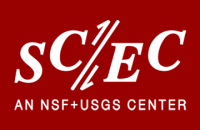

Conference Program
Download the 11NCEE Print Program PDF
You can view the daily program by clicking on any of the above session types or click on "Search Presentations" to see a list of all conference presentations. You can also search the entire program by author, paper id, or keywords using the search box above. If you have any concerns about the program please contact 11ncee@eeri.org.
Tuesday 26-Jun-18: 8:00 am - 10:00 am
PL1. Creating Change in Southern California and Beyond: Influencing the Way We Think About Mitigation and Our Communities
MODERATOR: David Cocke, Structural Focus;
DESCRIPTION: In this opening plenary session, California Assemblymember Adrin Nazarian and Dr. Lucy Jones will showcase recent advancements and achievements in seismic mitigation policy in Southern California. They will be followed by a discussion panel with local officials designed to better understand what it takes to create successful mitigation policies and challenges to implement them successfully. They will be followed by Ashraf Habibullah who will discuss the invaluable role earthquake scientists, engineers and risk reduction experts play as change makers to ensure enhanced seismic safety for the good of society, and the critical need for the entire earthquake engineering community to work collaboratively to reach this goal. EERI President David Friedman, and 11NCEE Organizing Committee Chairs James Malley and David Cocke will also welcome attendees. To read more about the speakers in this session, visit: https://11ncee.org/program/invited-speakers
Welcome to Los Angeles & Recent Advancements in Seismic Legislation and Policies in Southern California (ID Plenary01)Lucy Jones, The Dr. Lucy Jones Center for Science and Society;
Download Presentation Advancing Seismic Legislation and Policies in California: AB 2681 & AB 1857 (ID Plenary01.5)
Adrin Nazarian, California Assemblymember;
EARTHQUAKE ENGINEERING: Celebrating the Grandeur and Glory of Our Profession (ID 1905)
Ashraf Habibullah, Computers and Structures, Inc.;
Download Presentation
Wednesday 27-Jun-18: 8:00 am - 8:50 am
PL2. Seismic Hazard: What Changes to Expect in Seismic Hazard Analyses in the Next 5 Years
MODERATOR: Christine Goulet, SCEC USC;
DESCRIPTION: Traditionally, global GMPEs have been developed for three broad tectonic categories: active crustal regions, stable continental regions, and subduction zones. As empirical data sets have grown in the last decade, it has become clear that there are significant differences in the distance scaling and site scaling within these broad tectonic categories. The NGA-W2 GMPEs incorporated systematic regional differences in the in VS30 scaling, basin depth scaling, and large distance scaling for large regions (California, Japan, Taiwan, Italy, Turkey, ... ). The key differences between the 2008 NGA GMPEs and the 2014 NGA-W2 GMPEs are due to these regional differences. The effects of regionalizing the GMPEs were clearly seen in the site factors: the 2014 NGA-W2 GMPEs for California showed much stronger scaling with VS30 than the 2008 NGA GMPEs based on the global average. This change reflects the different geologies in these regions that have different correlations between the shallow shear-wave velocity (VS30) and the deep VS profile that controls site amplification. The NGA-W2 GMPEs considered the differences for broad regions, but there are systematic differences in the ground-motion scaling over a much small scale. Within California, the regional differences can be observed over distances of 15 to 30 km for the distance scaling and over even shorter distances for the site scaling, indicating that there can be significant changes in the hazard over short distances. The current efforts to include site-specific basin effects into the national hazard maps is one of the first steps in this move to site-specific GMPEs to capture regional differences over short distance within a broad tectonic region. As new GMPEs regionalized over shorter distance scales are applied, there can be significant changes in the estimated hazard at specific sites: some sites will have increased hazard and some sites will have reduced hazard. Example hazard calculations using non-ergodic GMPEs that include finely regionalized distance and site scaling effects will be shown. These examples show that there can be up to a factor of 2 increase or decrease in the ground motion for return periods of 1,000 to 10,000 years. Initially, hazard analyses based on non-ergodic GMPEs will be limited to site-specific studies, but non-ergodic terms, such as site-specific basin factors, are currently being considered for the national hazard maps. Regionalized path effects are the next step in this move to non-ergodic hazard. Dr. Abrahamson is an internationally known expert in seismic hazard and risk analyses with 30 years experience in the practical application of engineering seismology to the development of deterministic and probabilistic seismic criteria for engineering design and evaluations of seismic risk. He has been involved in developing or reviewing design ground motions for hundreds of projects around the world including dams, bridges, nuclear power plants, nuclear waste repositories, water and gas pipelines, rail lines, ports, landfills, hospitals, electric substations, and office buildings. The focus of his research has been the interface between the earth sciences and earthquake engineering. His work on ground-motion models includes the statistical methods for empirical ground-motion models such as the random-effects regression methodology and incorporation of hanging-wall effects, directivity effects, fling effects, and basin effects into empirical ground-motion models using constraints from numerical simulations. His work on seismic hazard has focused on the epistemic uncertainty in the hazard and how to reduce the uncertainty using constraints from fragile geologic features and using recordings of ground motions at the site of interest. Currently, he is working on partially and fully non-ergodic ground-motion models that transition from using global ground-motion models to using site-specific and source-specific ground-motion models. To read more about the speakers in this session, visit: https://11ncee.org/program/invited-speakers
What Changes to Expect in Seismic Hazard Analyses in the Next 5 Years (ID Plenary02)Norman Abrahamson, UC Berkeley;
Download Presentation
Thursday 28-Jun-18: 8:00 am - 8:50 am
PL3. Seismic Risk: Toward Performance-Based Construction - Better Buildings by Design
MODERATOR: James Malley, Degenkolb. Engineers;
DESCRIPTION: Maryann’s collaboration with the late Professor Steve Mahin is the foundation for this talk, which was originally intended to be jointly presented with Steve. It will instead be presented in his honor. Maryann Phipps is a Structural Engineer with over 35 years of experience evaluating, designing and renovating buildings. She has served as Structural Engineer of Record for hundreds of renovation projects designed to enable buildings to remain operational following large earthquakes. Maryann’s hands-on experience designing seismic protection for nonstructural components has helped make her a recognized expert in the field. She was the lead technical consultant for FEMA P-74 Reducing the Risks of Nonstructural Earthquake Damage, which received an Award of Excellence from the Structural Engineers Association of California. Maryann was co-leader of FEMA’s reconnaissance team for the South Napa Earthquake and co-authored FEMA P-1024 Performance of Buildings and Nonstructural Components in the 2014 South Napa Earthquake. Maryann is currently technical lead for a NIST-sponsored project Seismic Analysis and Design of Nonstructural Components and Systems intended to advance the state of practice in this field. Maryann is a current member of the California Hospital Building Safety Board, California State University Seismic Review Board, and UCSF Seismic Review Committee. She is also a Past President and Fellow of the Structural Engineers Association of California, and served as Director of the Applied Technology Council. To read more about the speakers in this session, visit: https://11ncee.org/program/invited-speakers
Toward Performance-Based Construction – Better Buildings by Design (ID Plenary03)Maryann Phipps, President of Estructure;
Download Presentation
Friday 29-Jun-18: 8:00 am - 8:50 am
PL4. Seismic Policy: What Drives the Agenda in Earthquake Policy?
DESCRIPTION: Tom Birkland is a Professor of Public Policy in the School of Public and International Affairs at North Carolina State University, as well as the associate dean for Research and Engagement in the College of Humanities and Social Sciences. He has studied the politics of natural hazards and technological accidents for more than 20 years. He holds a PhD in Political Science from the University of Washington. Before joining NC State, Birkland was an associate professor of public administration in the Nelson A. Rockefeller College of Public Affairs and Policy at SUNY-Albany. In 2006, Birkland was the program director for the Infrastructure Management and Hazard Response Program at the National Science Foundation in Washington, D.C. Birkland is the author of two books and several articles on the public policy aspects of disasters. His 2006 book Lessons of Disaster is a follow-up to his 1997 book, After Disaster. He is is a former editor of the International Journal of Mass Emergencies and Disasters and is series editor for Springer's series on "Environmental Hazards," for which he invites proposals for books and edited volumes. He is also an active scholar in the broader policy process research field and he is the author of An Introduction to the Policy Process, published by Routledge. Tom’s presentation will be forward-looking based on past experience in public policy and current trends at the federal level. To read more about the speakers in this session, visit: https://11ncee.org/program/invited-speakers
What Drives the Agenda in Earthquake Policy? (ID Plenary04)Thomas A. Birkland, North Carolina State University;
Download Presentation
Friday 29-Jun-18: 12:15 pm - 1:15 pm
PL5. Closing Plenary
DESCRIPTION: This closing plenary session will include a brief summary of new findings and lessons learned during the course of the conference, followed by the awards ceremony for the Seismic Design Competition (SDC). Light lunch fare will be provided.
Download Presentation







